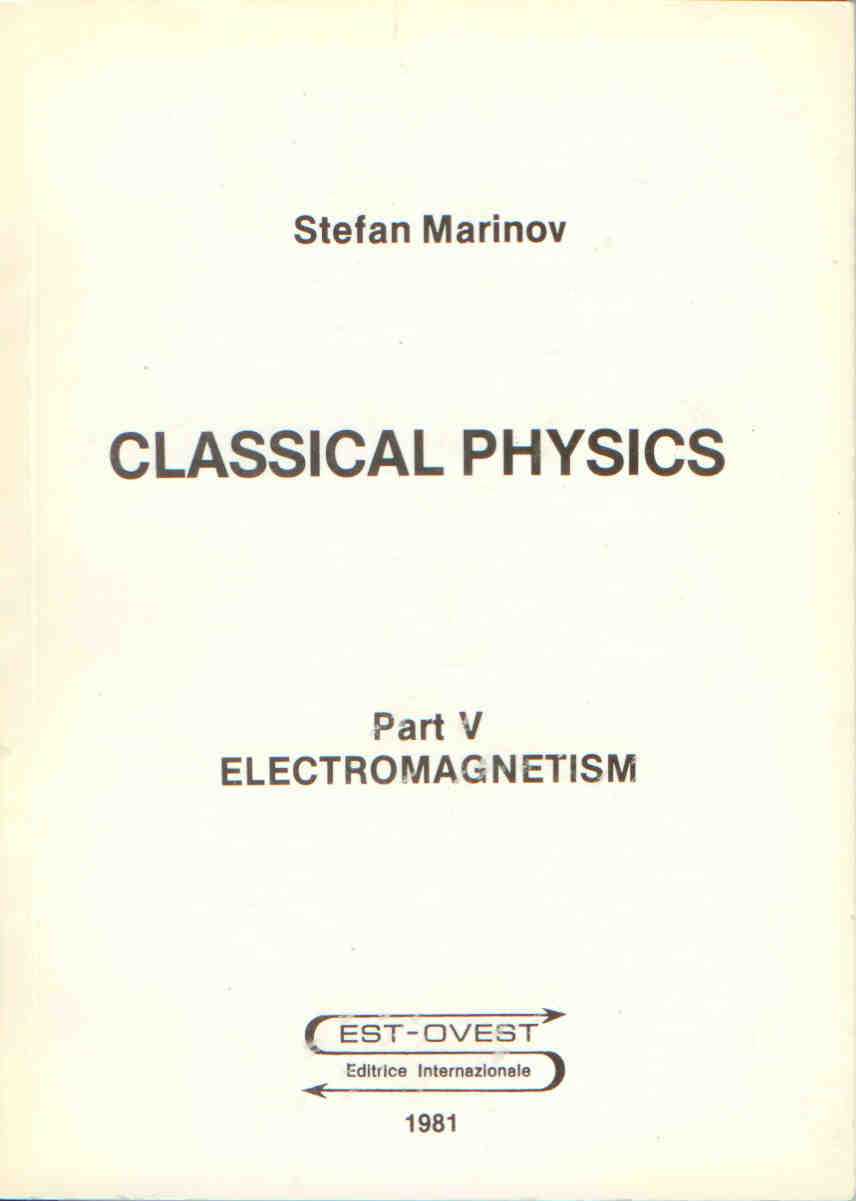Classical Physics, Part V: Electromagnetism
ELECTROMAGNETISM represents Part V of Marinov?s encyclopaedic CLASSICAL PHYSICS. In Marinov?s absolute space-time theory the fundamental equations in electromagnetism and gravimagretism are obtained as mathematical corollaries of the axiomatically accepted energy conservation law and of the axiomatically introduced forms of the space (electrical and gravitational), space-time (magnetic and magretic), and time (rest plus kinetic) energies. The unique difference between electromagnetism and gravimagretism is that the parameters of the space and space-time energies in electromagnetism are the electric charges of the particles which are velocity independent, while in gravimagretism those parameters are the proper masses of the particles which are velocity dependent. Marinov shows (in Part III) that the time energy of any particle is its gravitational energy with the mass of the whole universe. Thus, because of the velocity dependence on the gravitational energy, any particle is related to absolute space through its proper mass. The recent experiment of Werner on the Sagnac effect with neutrons gives an eloquent confirmation of this assertion. When considering the motion of a particle in a moving laboratory, electromagnetic forces appear due to the absolute motion of the laboratory. So the elementary particles revolving in a circular accelerator move with different velocities at different points of their trajectories. Marinov builds whole his theory without introducing the notion "spreading of interaction"; on the basis of his absolute space-time conceptions he calculates in a very simple and lucid way the potential, radiation, and radiation reaction fields of a moving charge.



